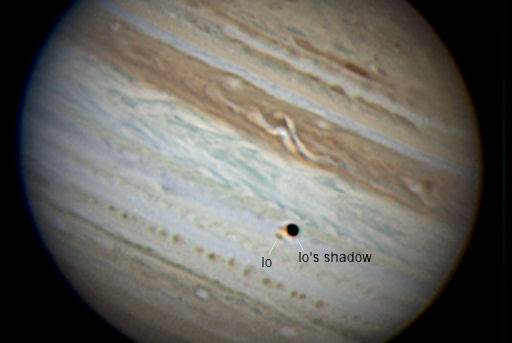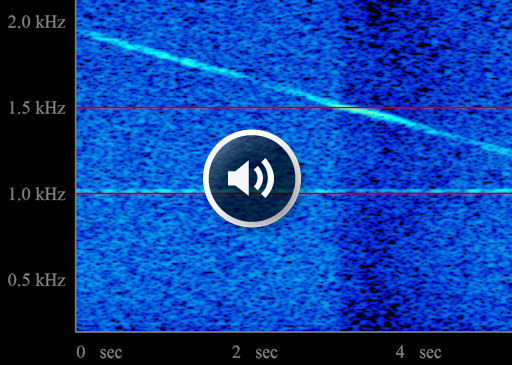AURORA ALERTS: Did you miss the Northern Lights? Next time get a wake-up call from Space Weather PHONE | | |
CLOSE ENCOUNTER WITH JUPITER: Tonight, Earth and Jupiter converge for their closest encounter until 2022. The giant planet will soar overhead at midnight, outshining everything except the Moon itself. At this time, even a small telescope pointed at Jupiter will reveal the planet's moons, cloud belts and swirling storms. Take a look!
If Jupiter is up at midnight, it must be opposite the sun: diagram. Indeed, astronomers call this "Jupiter's night of opposition." The effect of opposition may be seen in the shadow of Jupiter's moon Io, shown here in a photo taken last night by Anthony Wesley of Australia:

"Io was almost on top of its own shadow," points out Wesley. "This is due to the near-perfect alignment of Jupiter, Earth and the sun."
In a coincidence of interplanetary proportions, Uranus is also at opposition tonight. This rare double opposition of two giant planets is a once-in-a-lifetime event. Unlike Jupiter, Uranus is barely visible to the naked eye, a result of its smaller size and greater distance. It looks great, however, through a small telescope. Just point your optics at Jupiter and you will find emerald Uranus about 1o away.
more images: from Alan Friedman at the Mt. Wilson Observatory in California; from Pete Lawrence of Selsey, West Sussex, UK; from Efrain Morales Rivera of Aguadilla, Puerto Rico; from Jerôme Grenier of Paris, France; from Frank Olsen of Tromvik, Norway; from Jimmy Eubanks of Boiling Springs, SC; from Mark Humpage of Lutterworth, UK; from P. Nikolakakos of Sparta, Greece;
SPACE STATION RADAR ECHO: The US Air Force Space Surveillance Radar is scanning the skies above the USA for Earth-orbiting objects. Yesterday, Sept. 19th at 16:09 UT, the International Space Station flew through the radar's primary beam, producing a strong echo. Click on the dynamic spectrum to listen:

The sound you just heard came from the loudspeaker of a receiver in Roswell, New Mexico, operated by radio engineer Stan Nelson. "The ISS was passing over Lubbock, Texas--midway between me and the Air Force radar," he says. "It was the perfect geometry for catching the echo."
As the ISS raced through the radar beam at 17,000 mph, its velocity vector rotated with respect to the transmitter below. That's why the echo sounds like the frequency-shifting whistle of a passing train. It's the Doppler effect, working in space the same way it does on Earth.
The space station will be making more passes through the radar beam in the days ahead. Next up: Sept. 24 @ 2142 UT (1642 CDT). Tune in to SpaceWeather Radio for live echoes.
UPDATED: Sept. 2010 Northern Lights Gallery
[previous Septembers: 2009, 2008, 2007, 2006, 2005, 2004, 2002, 2001, 2000]
Potentially Hazardous Asteroids (
PHAs) are space rocks larger than approximately 100m that can come closer to Earth than 0.05 AU. None of the known PHAs is on a collision course with our planet, although astronomers are finding
new ones all the time.
On September 20, 2010 there were 1145 potentially hazardous asteroids.
Notes: LD means "Lunar Distance." 1 LD = 384,401 km, the distance between Earth and the Moon. 1 LD also equals 0.00256 AU. MAG is the visual magnitude of the asteroid on the date of closest approach. | | The official U.S. government space weather bureau |
| | The first place to look for information about sundogs, pillars, rainbows and related phenomena. |
| | Researchers call it a "Hubble for the sun." SDO is the most advanced solar observatory ever. |
| | 3D views of the sun from NASA's Solar and Terrestrial Relations Observatory |
| | Realtime and archival images of the Sun from SOHO. |
| | from the NOAA Space Environment Center |
| | from the National Solar Data Analysis Center |

